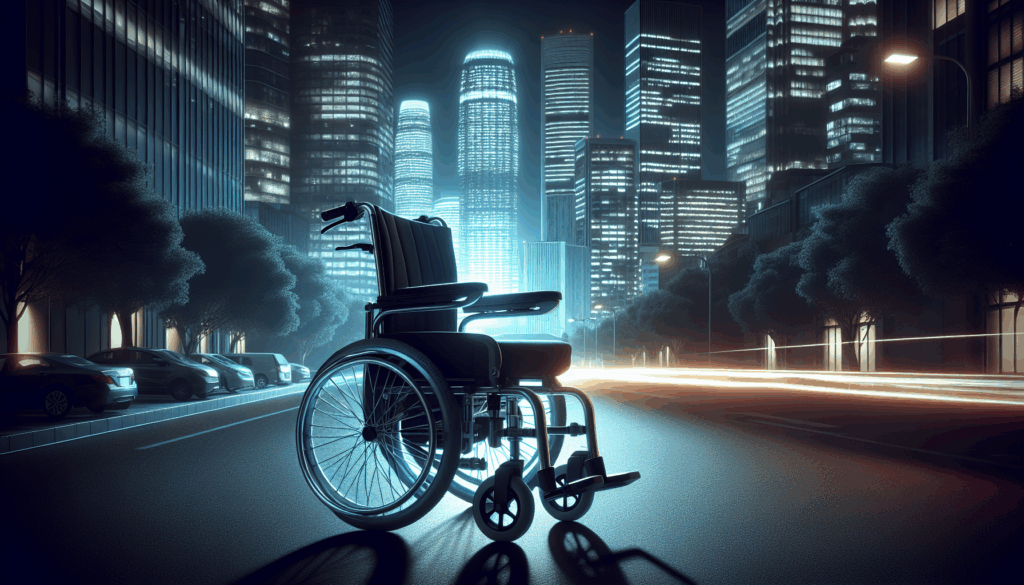
Electric wheelchairs have become essential mobility aids for many, enhancing independence and quality of life. However, the performance and efficiency of these devices are significantly influenced by the type of battery they use. In this blog, we will explore the two primary battery types used in electric wheelchairs: lithium-ion and lead-acid batteries. While lithium-ion batteries are gaining popularity for their lightweight design and longer range, lead-acid batteries still offer affordability and reliability. Understanding the implications of each battery type is crucial for users who wish to choose the best option tailored to their specific needs.
Overview of Lithium-Ion and Lead-Acid Batteries
Lithium-ion and lead-acid batteries are two commonly used energy sources for electric wheelchairs, each possessing distinct characteristics that influence the overall performance of the device. Lithium-ion batteries are known for their lightweight design, higher energy density, and longer lifespan, typically allowing a range per charge of 10-15 km for models like the Edegree EW6. Their compact size and lower weight frame improve mobility and handling, making them ideal for users seeking performance efficiency. Furthermore, lithium-ion batteries usually require a shorter charging time, enhancing convenience for users who rely on electric wheelchairs for daily activities.
On the other hand, lead-acid batteries, such as those used in the Edegree EW1, are heavier and bulkier, yet they remain cost-effective and reliable. They provide a range of approximately 20 km per charge, making them suitable for longer travels without the need for frequent recharging. However, the added weight can affect the maneuverability of the wheelchair, especially for individuals who may require greater agility. Ultimately, the choice between lithium-ion and lead-acid batteries can significantly impact the user’s experience, from travel distance to the overall handling of the electric wheelchair.
Why Lithium-Ion Batteries are Preferred for Electric Wheelchairs
Lithium-ion batteries are gaining popularity in electric wheelchairs due to their superior energy density and lighter weight compared to traditional lead-acid batteries. With the Edegree EW6 model, for example, which features a 24V 10AH lithium battery, users can expect a range of approximately 10-15km per charge. This capability is especially beneficial for users looking for mobility solutions that require minimal downtime, as lithium-ion batteries have a shorter charging time of just 6-8 hours. Furthermore, their lighter weight at 14.8kg, including the battery, makes it easier for users to transport the wheelchair, enhancing overall user convenience and independence in mobility.
In addition to these advantages, lithium-ion batteries offer longer cycle lives, meaning they can be charged and discharged more times before needing replacement, which translates to cost efficiency over time. Their performance in terms of speed is also notable, as evidenced by the Edegree EW6’s dual motor system that allows for speeds of up to 8 km/h. Overall, the benefits of lithium-ion batteries such as efficiency, weight, and longevity make them a preferred choice for modern electric wheelchairs, providing users with better performance and greater overall satisfaction in their mobility experience.
The Role of Lead-Acid Batteries in Electric Wheelchairs
Lead-acid batteries have been a long-standing choice for many electric wheelchairs due to their reliability and cost-effectiveness. When it comes to models like the Edegree EW1, which utilizes a 24V 10AH lead-acid battery, users can expect a range of about 20 km per charge, making it suitable for daily commuting and short trips. While lead-acid batteries are heavier—contributing to the EW1’s total weight of 38 kg—they offer a notable ability to maintain performance under intermittent use, making them ideal for users who may not require extensive daily travel.
Furthermore, with a charging time of around 6 hours, these batteries can quickly be topped up, ensuring the wheelchair is ready for use when needed. This flexibility has made lead-acid batteries a popular choice, especially for those who prioritize budget over advanced technology. In contrast to lithium-ion batteries, lead-acid versions tend to have shorter life cycles and take longer to charge, yet their robust design provides some peace of mind regarding availability and maintenance.
Additionally, the ability to support higher climbing angles, like the Edegree EW1’s 13° capability, ensures that users can traverse varied terrains without significant power loss. Ultimately, while modern electric wheelchair options like the Edegree EW6 with lithium batteries may offer enhanced performance, lead-acid batteries continue to fulfill the needs of those who seek practicality and affordability in their mobility aids.
Comparative Analysis of Battery Range and Performance
When it comes to electric wheelchairs, the choice of battery type significantly influences their overall performance and usability. Lithium-ion batteries, like those used in the Edegree EW6 model, offer a range per charge of 10-15 km, making them suitable for short-distance travel and daily use. They are lighter, weighing about 14.8 kg with the battery included, which facilitates easier transportation and maneuverability.
Additionally, they have faster charging times of approximately 6-8 hours, allowing users to quickly recharge between uses. Their ability to sustain higher speeds, with forward and reverse speeds reaching up to 8 km/h, contributes to a more dynamic riding experience for users, particularly in urban settings. This makes lithium-ion batteries the preferred option for those needing flexibility and efficiency in their electric wheelchairs.
On the other hand, lead-acid batteries, as seen in the Edegree EW1 model, provide a longer range of up to 20 km per charge. However, they come with disadvantages, including a heavier overall weight of 38 kg and slower speeds capped at 6 km/h. Additionally, with a charging time of around 6 hours, they may not offer the same convenience as lithium-ion alternatives. While lead-acid batteries are generally more budget-friendly, weighing the pros and cons regarding range, speed, and mobility is essential for those choosing the right electric wheelchair for their needs. Understanding these differences will lead to better-informed decisions based on individual lifestyle and requirements.
Charging Times: How Battery Type Affects Usability
Charging times significantly impact the usability of electric wheelchairs, as they determine how quickly users can return to mobility after their wheelchair’s battery has drained. Lithium-ion batteries, such as those found in the Edegree EW6 model, charge within 6 to 8 hours, providing a range of 10-15 km per charge. This relatively short charging time allows users to quickly recharge their chair and get back to their daily activities more efficiently. Moreover, the advanced energy density of lithium-ion batteries means that they can deliver a high amount of power without being overly heavy, combining performance and convenience for users who lead active lives.
On the other hand, lead-acid batteries, like those used in the Edegree EW1, have a standard charging time of around 6 hours. While this might seem comparable to lithium-ion options, lead-acid batteries tend to be bulkier and heavier, weighing around 38 kg for the EW1 model. This added weight can lead to less efficient mobility and maneuverability, potentially limiting the user’s ability to use the chair in various environments. The battery type, therefore, plays a crucial role in the overall usability of electric wheelchairs, affecting not only how long users have to wait for a recharge but also how heavy and cumbersome the chair feels during use.

Weight Considerations: Lithium-Ion vs Lead-Acid in Wheelchairs
When considering electric wheelchairs, the type of battery significantly influences weight, portability, and overall performance. Lithium-ion batteries, like those used in the Edegree EW6, are lighter, weighing only 14.8 kg, which enhances maneuverability and transportability. This lighter design is particularly beneficial for users who need to easily navigate tight spaces or lift their wheelchair into a vehicle. With a range of 10 to 15 km per charge and a reasonable charging time of 6 to 8 hours, lithium-ion batteries offer a balanced solution for users requiring mobility without the added burden of weight.
On the other hand, lead-acid batteries, such as those found in the Edegree EW1, weigh significantly more at 38 kg. While they provide a longer range of up to 20 km per charge, their heavier construction can make maneuvering more challenging for some users. Nevertheless, lead-acid batteries can be more economical, providing reliable performance at a lower price point. Ultimately, the choice between lithium-ion and lead-acid batteries in electric wheelchairs should consider both individual mobility needs and the ability to handle the weight effectively, which can dramatically affect daily usage and independence.
Motor Power and Battery Type: What You Need to Know
When it comes to electric wheelchairs, the type of battery used can significantly influence motor power and overall performance.
Lithium-ion batteries, like those found in the Edegree EW6 model, offer advantages such as a higher energy density and lighter weight compared to lead-acid batteries. This enables greater efficiency, so the wheelchair can achieve a range of 10-15 km per charge while maintaining a maximum speed of up to 8 km/h. The lighter weight of lithium-ion allows for easier portability and maneuverability, making it a favorable choice for users who prioritize freedom of movement and long-distance travel.
Additionally, the charging time of 6-8 hours for lithium batteries contributes to minimal downtime, ensuring the electric wheelchair is ready for use in a shorter period. On the other hand, lead-acid batteries, such as those in the Edegree EW1, while more affordable, tend to be heavier and bulkier. They provide a range of approximately 20 km but with lower speed capabilities of up to 6 km/h. This can limit the wheelchair’s performance, especially for users needing quicker mobility. Furthermore, lead-acid batteries have a longer charging time of around 6 hours and can cause additional strain due to their weight, creating potential challenges for some users.
Ultimately, the choice between lithium-ion and lead-acid batteries can dictate how well an electric wheelchair meets the individual needs of the user, influencing factors like range, speed, and ease of handling.
The Impact of Battery Life on Electric Wheelchair Longevity
The type of battery used in an electric wheelchair has a significant impact on its longevity and overall performance. Lithium-ion batteries, such as those used in the Edegree EW6, offer advantages like a longer lifespan and shorter charging times, typically taking between 6 to 8 hours to fully charge and providing a range of 10 to 15 kilometers for a single charge. This improved efficiency allows users to travel further without frequent recharges, making lithium-ion batteries a preferred choice for those seeking durability and reliability in their electric wheelchairs. Additionally, their lightweight nature reduces the overall weight of the device, enhancing maneuverability and ease of use for individuals needing assistance in daily mobility tasks.
On the other hand, lead-acid batteries, exemplified by the Edegree EW1, are commonly used due to their lower upfront costs and robustness in various conditions. They tend to be heavier, which can affect the wheelchair’s performance, including a reduced speed of up to 6 km/h and less efficient climbing ability. Lead-acid batteries typically require more time to charge and might not provide the same range per charge as lithium-ion varieties. Despite these limitations, they are still a viable option for users prioritizing budget over extended battery life. Understanding the impact of battery type is crucial as it directly influences an electric wheelchair’s range, weight, and user experience, ultimately steering choices best suited to individual needs.

Final Thoughts on Battery Choices for Electric Wheelchairs
In summary, the choice between lithium-ion and lead-acid batteries can dramatically influence the performance of electric wheelchairs. Lithium-ion batteries, like those used in the Edegree EW6, provide advantages such as a longer range per charge and lighter weight, making them suitable for users who prioritize mobility and efficiency. On the other hand, lead-acid batteries, like those in the Edegree EW1, while heavier, are often more cost-effective and still meet the range needs for many users, especially for shorter distances. Understanding these differences helps users make informed decisions that align with their mobility needs and budget.
Moreover, the impact of battery type extends beyond just weight and range; it also affects factors such as charging time, climbing ability, and overall ease of use. Choosing the right battery can enhance user experience, allowing for more freedom and confidence when navigating various terrains. Ultimately, whether opting for a lithium-ion or lead-acid battery, it’s essential for electric wheelchair users to weigh their priorities and select a wheelchair that makes their daily journeys as enjoyable and efficient as possible.
